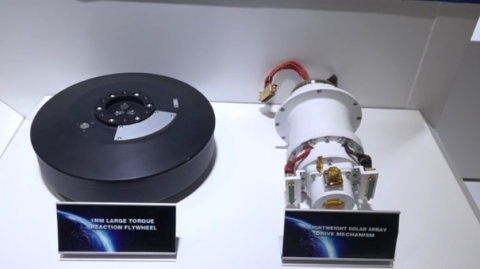
ADELAIDE, Australia (CCTV) — China’s low-cost commercial satellites have been highlighted at the 68th International Astronautical Congress, which will conclude in the southern Australian city of Adelaide on Friday.
Models of the KZ-11 solid rocket are on display by the China Aerospace Science and Industry Corporation (CASIC), one of China’s large state-owned hi-tech enterprises, and have attracted much attention.
The rocket’s easy launching process will help decrease the costs for putting satellites into orbit.
“In the international market, the cost of launching a small-sized satellite stands at about 20,000 to 30,000 U.S. dollars per kilogram. We aim to make the cost less than 10,000 U.S. dollars,” said Cao Meng, an engineer from CASIC.
By 2020, China will have formed a system of sensing satellites, which will include 20 optical satellites capable of 0.3- and 0.5-meter resolution, as well as several video satellites and synthetic aperture radar satellites.
Notably, these will not be solely invested by the government, but are commercially funded.
Data they provide will not only be used by the government, but also be applied to commercial and private services.
“We focus on low-cost, fast-made and small-sized satellites with simple functions. In a sense, that’s supplementary to what the government has done. We cost less, and develop and produce research faster,” said Yang Feng, CEO of Spacety, one of China’s first commercial aerospace companies.
A 10-kilogram satellite developed by Spacety was successfully launched last year. It took the group less than one year to complete the development and launch of the satellite and they are now working to cut this period in half.
China’s rapid achievements in the field of aerospace have been recognized by international experts.
“China’s aerospace is very successful and it has a number of big projects to the moon, to the lower-orbit of observation, telecommunication, launchers which are very successful. And I am impressed by the dynamism of China’s aerospace in the many different fields of space activities. So China is definitely one of the biggest space powers in the world,” said Jean-Yves Le Gall, president of the International Astronautical Federation (IAF).







